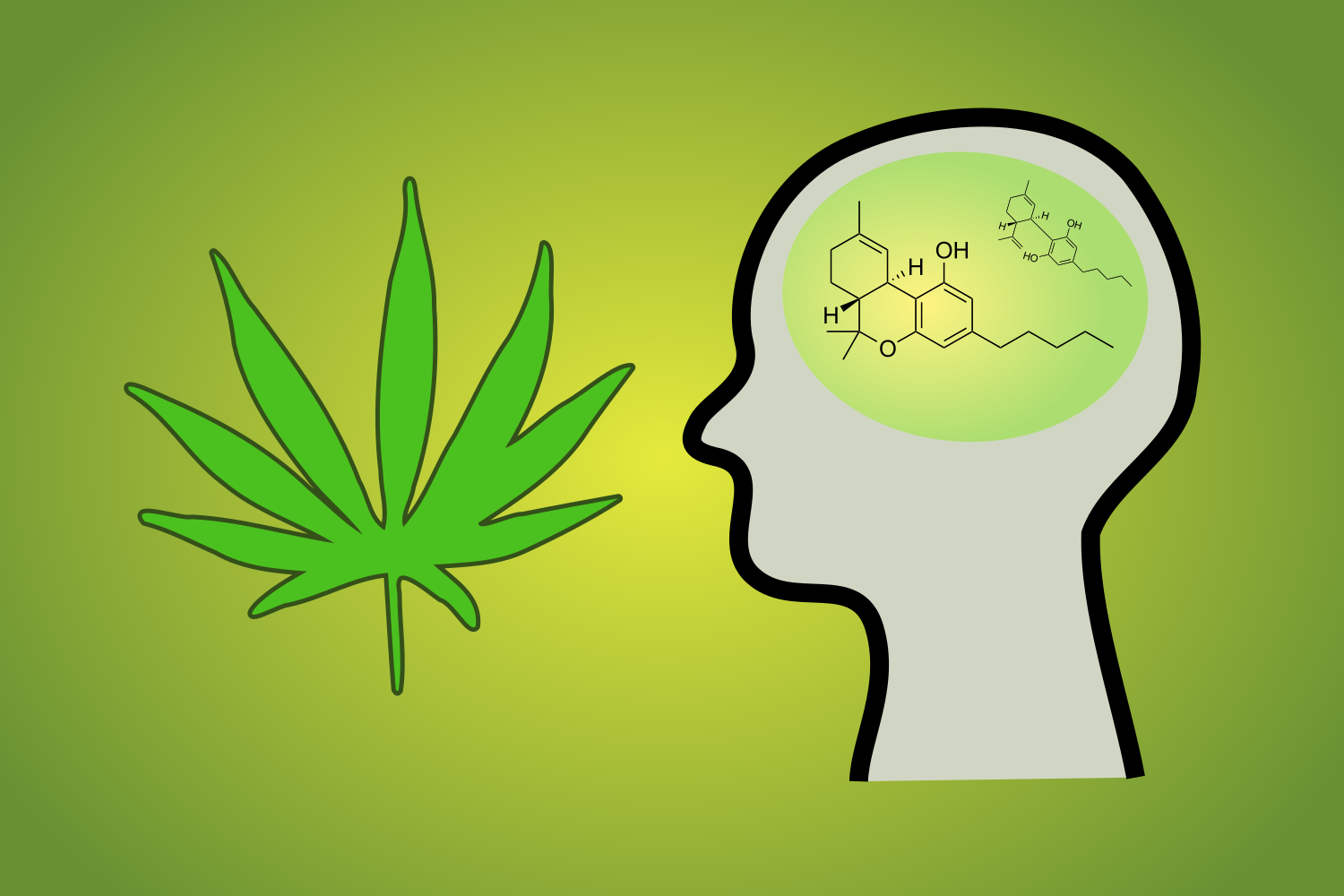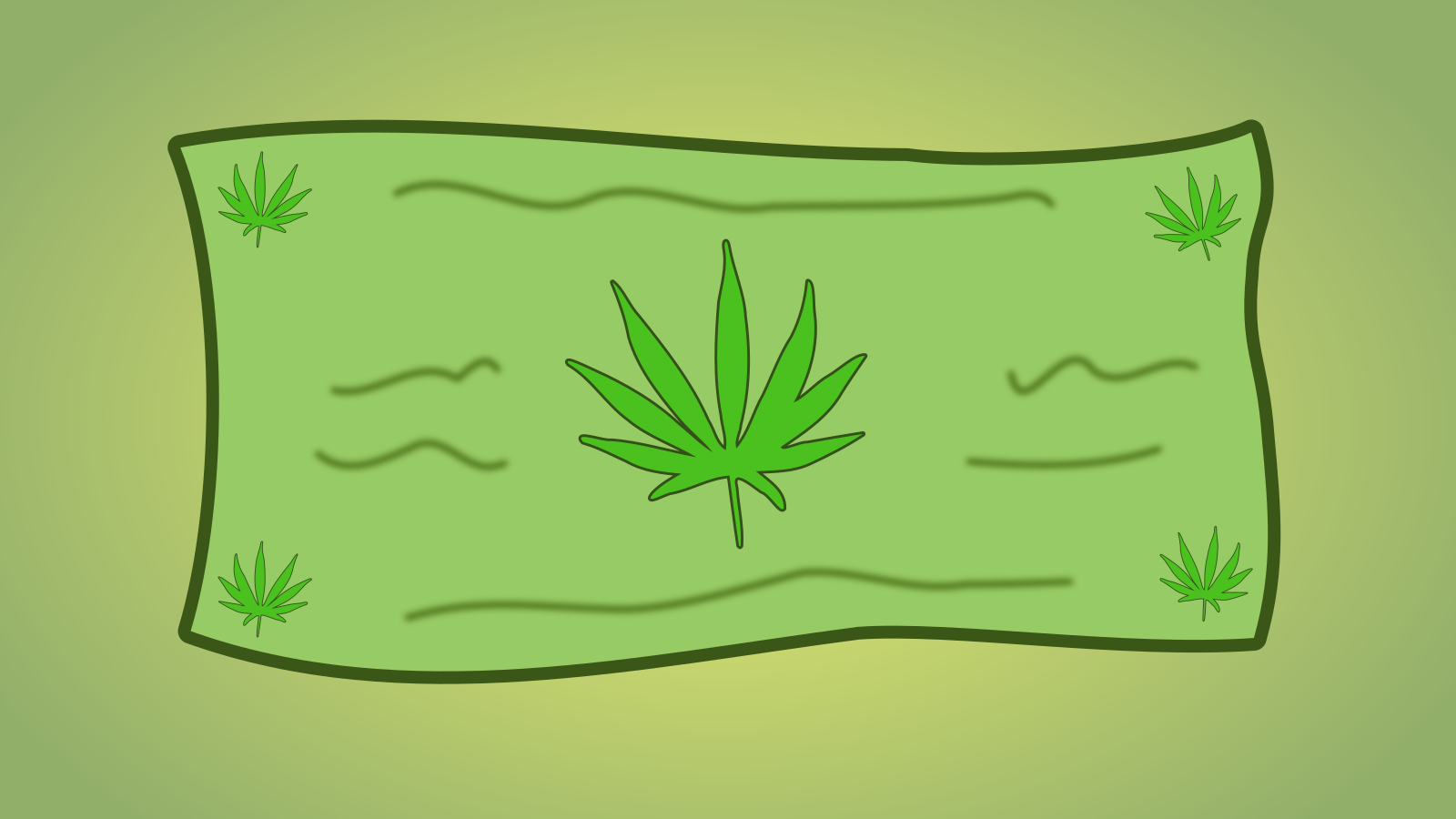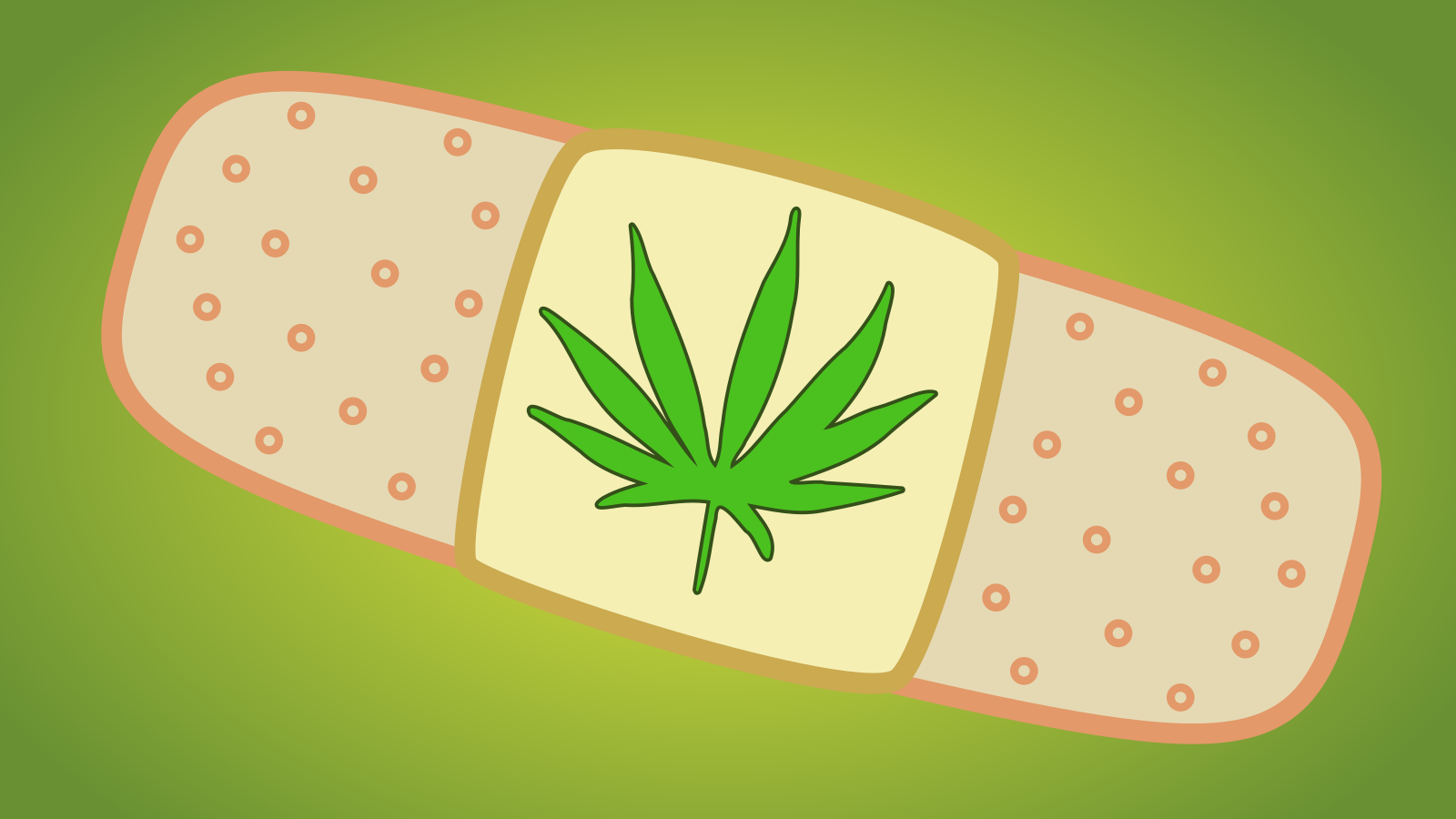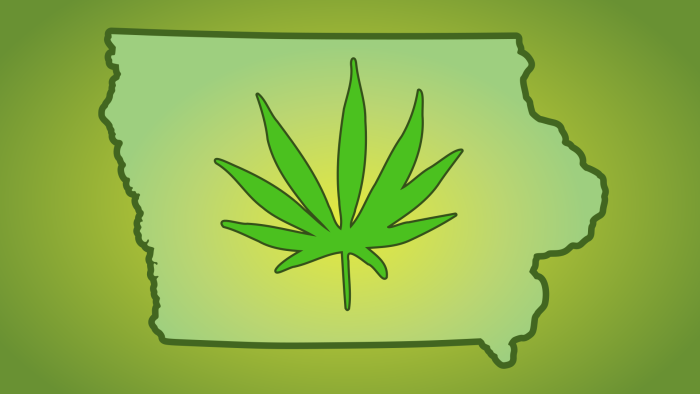Gwen Hope unpacks the economic and social possibilities that accompany legalizing cannabis, demystifying the oft-maligned psychoactive plant. -promoted by Laura Belin
Since the middle of the 20th century, cannabis has been a hot button issue, particularly since the Nixon Administration began the War on Drugs. Often political, the criminalization and demonization of the plant and substances derived from it has a complex, but living history in the United States.
A microcosm of the country incarnate, this issue is attached to almost every other issue and stance imaginable: from political party to patriotism, convention to community, race to religion, humanity to harm, morality to medicine, and everything in-between was and is attached to cannabis – the United States’s most popular illicit substance.
Cannabis Basics
Note: This section is intended to make sure all readers have sufficient understanding of the cannabis plant and terminology. If you are already well-versed in cannabis, please feel free to skip to the next major section.
There are countless terms for cannabis and its applications. You, dear reader, might have wondered why the author has chosen to use “cannabis” instead of more common terms such as marijuana, weed, pot, etc. There is a reason for that.
Cannabis is the name for the plant itself, but specifically, its genus, the small group of related organisms that primarily contains three main species of cannabis – sativa, indica, and ruderalis. These three species diverged from a common ancestor in Asia thousands of years ago. From these plants come all the substances and varieties of which we are more familiar.

About The Species
Cannabis sativa – tall to very tall, long, thin leaves, prefers hotter, sunnier climates, descended from Middle Eastern, African, and European heritage, moderate psychoactive effect
Cannabis indica – medium height, thick leaf width, cold tolerant, descended from Asian-Indian heritage, strong psychoactive effect
Cannabis ruderalis – short and compact, reduced number of leaf lobes, cold tolerant, descended from North Asian heritage, low psychoactive effect
Modern cannabis plants are selectively-bred amalgamations known scientifically as cultivars, but often referred to as hybrids. The first cultivars, however, were between sativa and indica plants, only later being crossed with ruderalis subspecies. Nearly all modern cultivars combine at least two cannabis species, if not all three. These cultivars have been rapidly developed in the past half-century unlike any time previous in human history. What they’re cultivated for depends greatly on the desired final products:
Cannabis Terminology
Marijuana – while often misused to refer to cannabis as a whole, specifically refers to dried cannabis, typically favoring flower buds, whose purpose is be to crushed/ground and smoked for a variety of effects; occasionally used to refer to the divergence of psychoactive cannabis vs hemp early in history
Hemp – the first recognized cultivar of cannabis, bred not for psychoactive effects but for industrial plant fiber – historically used to make rope, cloth and textile goods, food, and many more products; difficult to impossible to use for psychoactive function, depending on exact cultivar
Hashish – isolated and purified psychoactive resin from the cannabis plant, typically higher levels of psychoactive chemicals than marijuana, but varies; hashish is typically solid, while hash oil, another variety of this product, is typically a viscous liquid, concentrated hash oil is often also called a “dab”
Edibles – consumable food and beverage in which psychoactive cannabis compounds have been infused after extraction with typically oils, fats, or alcohols; produces different and typically longer-lasting psychoactive effects than smoking marijuana due to mechanism of metabolism
Psychoactive Effects

The psychoactive effects of cannabis vary greatly, but mostly depend on two major chemicals – tetrahydracannabinol (THC) and cannabidiol (CBD). THC is the chemical associated with the euphoric or “high” feeling of cannabis, while CBD is responsible for neurologically-calming effects, such as anxiety or seizure reduction. The ratio of these chemicals are the most important to understanding a strain of cannabis and its effects on the human body. However, there are many more psychoactive chemicals in cannabis, but most are too minor to have much effect. Some minor compounds, such as CBN, CBC, CBL, and CBG, require more study. The ratio of THC to CBD varies greatly where no legal, regulated market exists.
Cannabis can have a psychoactive effect due to the human body naturally having its own internal system that produces similar chemicals called the endocannabinoid system. This system is important for various bodily functions, such as appetite regulation, reproduction, memory, and sensation of pain. These compounds interact through this system similarly to how our body’s own natural cannabinoid compounds interact, but to different effects based on compound structure.
Breeding Bud
Nearly every part of the cannabis plant contains psychoactive chemicals to some degree, however they very greatly from part to part. Most coveted are the flowers of the plant, often called “bud”, which contain the highest THC concentrations. To understand why this is, we need to understand cannabis reproduction. The plant can breed somewhat asexually (self-pollinate) if the plant is hermaphroditic, which are the most common type, however some plants are only a single sex. The THC is produced in a sticky, psychoactive resin that the female variant of the plant uses to trap pollen from the air. Once pollinated, THC production goes down and the plant’s energy is put into making seeds, which typically have the lowest THC levels.
In the mid-late 20th century, cannabis growers would typically try to sell the whole plant – flowers, leaves, stems, and seeds. Mixed together, the high and low THC parts of the plant form a generally consistent THC and CBD percentage and ratio. However, knowing the flowers produced a stronger effect, dealers often regarded it as a premium product until the last few decades. Today, nearly all of what is sold legally and most of what is sold illegally is bud. However, how did this come about? The answer is selective breeding and cultivation. Growers (mostly illegal ones) have bred cultivars of cannabis to have bigger and bigger flowers, which means the overall THC concentration of a single plant goes up.
Rigging Resin
The true change happened with the advent of sinsemilla, a.k.a. sinse or seedless weed. Forgotten for centuries, growers picked up upon a latent way to superpower their cannabis. Remember, the female plants produce more psychoactive resin to attract pollen. If isolated from pollination, the plants go into reproductive desperation and massively ramp up resin production, coating themselves in the substance. In this way, sinsemilla typically averages 3 to 5 times the THC concentrations of normal psychoactive-cultivar cannabis. This specialty product has become lucrative and overall importation and growing of cannabis to most developed countries is increasingly sinse.
However, this concerns many experts regarding new users. High amounts of THC alone can, without proper tolerance, expose newer users to potential for increased anxiety, paranoia, and unstable psyche. Traditionally, CBD balanced out THC, moderating and attenuating any side effects, reducing anxiety, and promoting relaxation, but not with high-powered super strains of cannabis. THC and CBD share a typically inverse relationship in the plant, the more THC, the less CBD, and vice-versa. High THC cannabis can be safely used by experienced users, due to their body’s familiarity with cannabinoids, but a new user can be vulnerable to these high concentrations if not properly exposed.
Money – The Green Dollar

Despite being illegal federally and in most states, cannabis-derived substances are big business, just like alcohol during Prohibition, and consumption of them drives billions and billions of dollars in both legal and illegal markets around North America. This isn’t anything new, as the drug has been one of the oldest and most continually utilized by humanity. Current legislation grants government a blanket monopoly on cannabis production, typically only legally produced for research up until within the past decade or so, when medical and recreational production has been allowed at the state level for the first time since outlawed.
Currently ten states (Alaska, California, Colorado, Maine, Massachusetts, Michigan, Nevada, Oregon, Vermont, and Washington) have legalized recreational marijuana, 23 in addition to those have legalized marijuana on a limited medical basis, and 14 more than those (including Iowa) have extremely limited medicinal legalization. However, everything except hemp (<0.3 percent THC), which was just legalized federally, is still illegal under the harshest classification for illicit drugs in the US – Schedule I – along with heroin, cocaine, and methamphetamine. Despite these limitations, states which have legalized and regulated use have seen a boost to their economies thanks to a greener form of that American green – the dollar.
Growing Green
Iowa is known for being one of the most agricultural states in the nation. Our corn production outdoes everywhere else in the world. Only large states like California hold sway over our agricultural dominance, but for the Midwest, there’s no disputing the preeminent growers here are Iowans. A legal, regulated market in Iowa for cannabis growing is a massive opportunity for our state and our farmers know it. Interested Iowa growers have been chomping at the bit to cash in, whether published in 2016 or recently in 2019.
Colorado’s production would look feeble once Iowa’s would be up and running. Furthermore, being nearly in the center of the country, Iowa would have better geography for distribution than Colorado. Even better, the Iowa legislature signaled tacit interest in the cannabis dollar, legalizing hemp production and marketing at the state level in April 2018 as well as licensing very limited medicinal growers last year as well.
Leveraging Iowa’s land and agricultural prowess, it wouldn’t be very hard to imagine a near future where Iowa was setting the stage for cannabis production for not only the Midwest, but the whole of the country. Especially good is the fact the domestic market would primary being consumed here, providing a market insulated from the modern capitalist notion of outsourcing to foreign land wage slavery. Done right, legalization will benefit Iowans in many ways and one of those ways will be the pocketbook.
Saving Green
The government, both federally and state-level, spends a lot of money on curtailing marijuana and other cannabis products. According to the Iowa Department of Corrections, 18 percent of prisoners and 26 percent of probatories and parolees are for drug offenses. Furthermore, on average nationwide, 52.7 percent of arrests with drug seizures are cannabis according to the FBI. When we apply these numbers, the reasonable estimate for prisoner reductions would around 800, while the reduction for probation and parole would number 4,200. All together that’s 5,000 less Iowans processing through the corrections system. To put it another way, that’s a nearly 10 percent reduction in prisoners and nearly 14 percent reduction in others going through the system.
Even more so, legalization would end the frivolous waste that is law enforcement hours spent arresting and seizing those who possess cannabis. There is no reasonable reason why the enforcers of the state should be spending time pursuing those trafficking a plant. All those prisoners and supervised others who are there for purely cannabis offenses had to be first arrested and investigated by police. It’s frankly a waste of taxpayer dollars which could be much better spent monitoring people actually endangering public safety or assisting citizens, which should be their first and primary duty.
Reaping Green
Iowa prisons are over capacity. Anytime prisons are over capacity there is only three things that happen: either people with lesser crimes are paroled/released, extra resources are expended to push the boundaries of capacity, or costs are cut by treating prisoners in a less-than-humane way. To solve prison capacity issues, typically the current American way is to build more prisons, spend more money, and typically give contracts to private prison corporations who are often in bed with politicians’ bank accounts. Instead, by legalizing cannabis and retroactively expunging non-violent, cannabis-only offenses, Iowa would not only set a moral precedent but a financial benefit. Iowa prison populations would immediately fall within capacity if implemented.

Of course, there are many more obvious ways to reap some green from green. Just look at Colorado. In 2014, two years after legalization, the state took in $67.5 million in revenue from marijuana, in the four years since then, the state has nearly tripled income and has sat at around $250 million revenue for the past two years – an increase of 270 percent since they started counting.

Imagine being able to put that money into our schools, our infrastructure, our public assistance programs, our healthcare issues. Government since the US began has benefited greatly from taxation of drugs such as alcohol and tobacco. There is no reason it couldn’t work for weed.
Society – Community Cannabis
Money is important for our society as it stands, however the society itself matters as well, if not more so. Financial benefit is all well and good if it benefits everyone in a society, however it has been ingrained in most of those alive today to view “drugs” as bad, dangerous, and often inherently immoral.
Under this monolithic “drug” category, all nuance is lost and the specific compounds matter little anymore. So in this world of parents raised with substance paranoia and their children propagandized against it in schools nationwide, we must ask ourselves “What non-fiscal good is cannabis really going to offer our society?”
Green Around The Gills

It’s 2019, it’s time to admit the draconian declaration of Schedule I that cannabis has no medical applications whatsoever is absurd. THC and CBD together can work pretty well for various ailments, both mental and physical. THC’s pain-relieving and appetite-stimulating functions can be very important for those with chronic illness or conditions. CBD’s penchant to reduce anxiety is wonderful for those (such as the author) with anxiety and panic disorders, as well as reducing seizures in many neurological conditions.
Currently known, cannabis medications can work for nausea and vomiting, appetite stimulation, chronic pain, spasticity due to multiple sclerosis or paraplegia, depression, anxiety disorder, sleep disorder, psychosis, glaucoma, and/or Tourette syndrome according to a systematic analysis study.
Opioid Issues
Most people who are aware of the opioid issue are likely concerned about the trend of addiction caused by over-prescription of opioid medications. This occurred for many reasons, most notably outright lies by pharmaceutical companies about the addictive nature of their products and doctors given kickbacks to prescribe them. One of the largest understated reasons it escalated is also due to the lack of middle-of-the-road pain relief.
Typically for the last decade or two, doctors will either prescribe very strong narcotic opioids or tell patients to utilize over-the-counter (OTC) NSAIDs like aspirin (Bayer®), ibuprofen (Motrin®/Advil®), acetaminophen (Tylenol®), or naproxen sodium (Aleve®). THC in cannabis functions as a decent mid-level pain reliever, often taking the edge off what the OTCs can’t without the addictive, powerful nature of opioids. A poignant article by Scientific American showcases two recent studies that show where marijuana is legal, prescriptions for opioids reduce.
Socially-Acceptable Danger
Many substances are legal and enjoyed by adults the world over that have damaging health effects. Prominent among them are tobacco and alcohol. However, as anti-smoking campaigns raged since the late 20th century, alcohol has remained not nearly as scrutinized despite the fact it’s the most outright dangerous of the socially-acceptable drugs. In fact, it is easier to kill yourself with alcohol than pentobarbital, a compound sometimes used in lethal injection. Many illicit drugs, such as MDMA (ecstasy), cannabis, LSD, and psilocybin (magic mushrooms) are actually less addictive than many common acceptable drugs
Drug_danger_and_dependence.png: Thundermakerderivative work: Jon C [CC BY-SA 3.0 or GFDL], via Wikimedia Commons
Marijuana is virtually impossible to overdose on, with no human death attributable exclusively to marijuana overdose ever recorded in the history of the world. It is no more addictive than caffeine, a very legal stimulant drug, and much less addictive than the nicotine in tobacco. It is also less addictive and much less deadly than alcohol. 2,000-2,500 people die each year from alcohol poisoning according to the CDC. However, it remains legal and regulated. In fact, combining two legal drugs – alcohol and caffeine, was rapidly made illegal after the FourLoko craze a few years ago.
The point is rather simple from a social and scientific standpoint. We routinely consider it socially acceptable for adults to engage in risky substance use magnitudes greater than many substances which are illegal and consider heinous to possess in many subcultures. It’s a glaring exception to the simple principle that more danger should equate to more regulation.
Bud Injustice
So if cannabis use is so relatively safe and less addictive than many legal substances, why is it illegal, and at such a high level such as Schedule I? The answer lies in propaganda, politics, and racism. During the Nixon Administration, the modern War on Drugs began in earnest. In 1994, President Nixon’s Assistant of Domestic Affairs, John Ehrlichman, made it pretty clear the target of the War on Drugs:
“The Nixon campaign in 1968, and the Nixon White House after that, had two enemies: the antiwar left and black people. You understand what I’m saying? We knew we couldn’t make it illegal to be either against the war or black, but by getting the public to associate the hippies with marijuana and blacks with heroin, and then criminalizing both heavily, we could disrupt those communities. We could arrest their leaders, raid their homes, break up their meetings, and vilify them night after night on the evening news. Did we know we were lying about the drugs? Of course we did.“
While never ending the American desire for either marijuana or heroin, the War on Drugs was successful in half its original goal – associating African-Americans with drug use and incarcerating them for it. This injustice stems from intentional, systematic racism and has led to a modern industry of mass incarceration.
Similar to another recent Bleeding Heartland article discussing racism in the justice system, while merely a fraction of the American population, minorities, especially African-Americans, have been put away for drug offenses, mostly marijuana offenses, more than any other. This deliberately racist, un-American reasoning is a blight on our history.
Iowa has a long history of being a trendsetter, from allowing the first female lawyer admitted to the bar in the US in the 19th century to being one of the first states legalizing same-gender marriage in the 21st century. Even come time for elections, Iowa’s caucuses have traditionally and historically been first in the nation for a long time. We can lead again making sure that legalizing and decriminalizing cannabis not only sets the future on the right course, but also rights the injustices of the past by expunging non-violent cannabis-only crimes from the record.
A Green World Stage
The majority of the drugs in the United States are not domestically produced. Like most things in your average big-box store, they’re produced at a low quality in a foreign country, often for pennies on the dollar by ruthless organizations who exploit and overwork the local population, often destroying the environment and culture in the process. However, being illegal, underground drug production is even more dangerous and insidious.
The cartels who produce our drugs are the same ones we vilify for violent warfare in Mexico and Latin America, the ones dealing not only in illicit drugs, but death, and human trafficking. This demand has fueled continual instability in many other nations. Legalized, it would no longer be cost efficient for the cartels to operate in the drug business, draining their coffers, and improving not only foreign shores but ours as well.
Americans want illicit substances and its time we moved to a reasonable future where some lesser drugs (such as cannabis) are legalized and regulated, while more dangerous and harder drugs are decriminalized and moved to a harm reduction and treatment model, which has been proven effective. Essentially, if we want these substances, we should produce them and deal with the ramifications of them ourselves, not thrust our desires upon the smaller nations we exploit.
Most importantly, however, we must address the causes of why people use substances: inadequate and ridiculously expensive healthcare, exploitative capitalist wage stagnation, ballooning education costs, lack of socioeconomic opportunity, unaddressed mental health needs, decades of nested trauma from generations of Americans who’ve collectively and individually weathered nearly ceaseless war, and furthermore.
A Better Way Forward
Overall, cannabis isn’t the demonic substance your parents or teachers might have warned you about. For Iowa, there are huge opportunities for economic growth, improving healthcare, saving taxpayer money, racial and socioeconomic justice, national leadership, and to discard unwarranted prejudices against cannabis and those who use it. If reasonable tax revenue, less opioid abuse, better-cared-for Iowans, breaking the back of drug cartels, and a better future aren’t for you, then maybe ending the stigma around and legalizing cannabis isn’t for you.
However, if you know the facts, as I’ve done my best to educate you on, and you are willing to strive for what can be, then let’s do our best to work for a better way forward for Iowa and our nation by destigmatizing and legalizing cannabis.
Gwen is a queer trans woman in her mid-20s who was born and raised in central Iowa. A diverse generalist, Gwen’s passion lies in speaking, writing, community education, and activism. One can find her periodically lecturing at DMACC as a guest speaker.
Iowa Cannabis, Mental Cannabis, Green Dollar, and Bud Bandage are original graphics by the author, Gwen Hope, and used with permission. Other graphics are public domain unless otherwise attributed.

